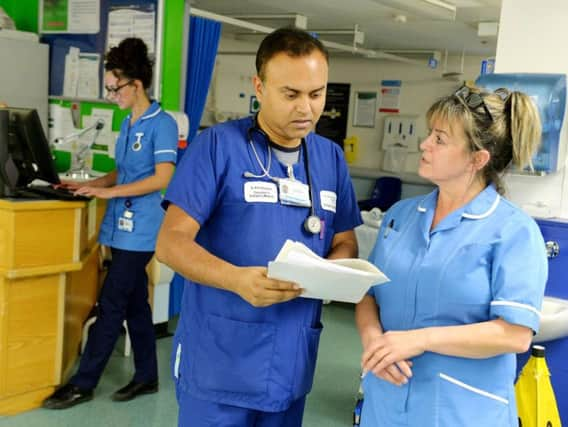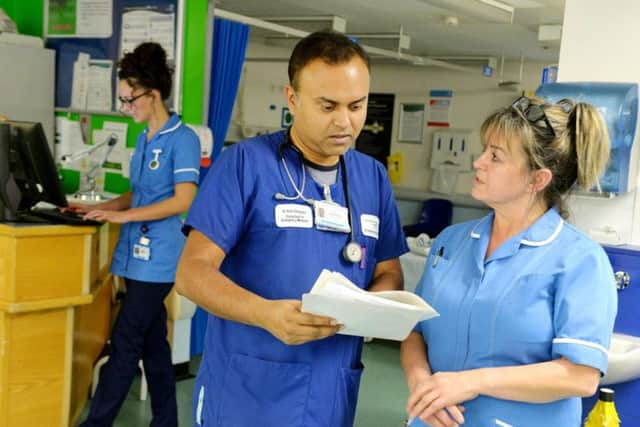When you should go to A&E and what happens at Leeds emergency department


St James’, based in Burmantofts, boasts one of the city’s two A&E departments, dealing with acute medicine and surgery, while Leeds General Infirmary’s A&E specialises in cardiac, trauma and care for children.
Advertisement
Hide AdAdvertisement
Hide AdNearly half of all patients at the A&E arrive by ambulance, compared to just 20 per cent at Leeds General Infirmary.


Patients in life-threatening situations are immediately taken to the resuscitation bay.
For others, they are taken to the Assessment Area, where they undergo an early assessment with a nurse to determine whether they need to be redirected elsewhere or have immediate treatment.
For patients who arrive themselves, they book in at reception and then are usually moved on to the nearby waiting area.
Advertisement
Hide AdAdvertisement
Hide AdThe department is then split into a number of areas - including the so-called Blue and Green areas.
Blue Area, staffed by a multidisciplinary team, made up of advanced practitioners, doctors, physiotherapists and nurses among other staff, is where care can be given inside A&E to avoid lengthy hospital admissions.
Services here are specifically-focussed on helping older people to be discharged sooner.
It is also home to the on-site ALPS Team, made up of mental health professionals capable of supporting patients suffering from mental health issues or in crisis, from suicide attempts to self-harming.
Advertisement
Hide AdAdvertisement
Hide AdMeanwhile, Green Area is designed to help A&E cope with changing numbers of attendances throughout the 24-hour cycle. During times of extra pressure, it can be used to look after patients who are waiting to be admitted into hospital.
The A&E also boasts an Acute Medical Assessment Area, formerly its minor injuries unit, which is staffed by physicians who can give more comprehensive medical care, like transfusions or administering medicine.
If a patient’s condition is suitable, they can now also be seen by a co-located GP, who is based at the emergency department.
Advertisement
Hide AdAdvertisement
Hide AdElsewhere, the A&E has a Frailty Unit, staffed by a multi-disciplinary team, including consultant geriatricians, who specialise in caring for older people.
Among the first of its kind in the country, it aims to care for elderly and frail people in a quieter place and helps to avoid unnecessary hospital admissions.
In another national first, the hospital opened its Clinical Decisions Unit in 2003.
It operates like a ward, with 11 beds, but is based inside A&E and offers short-term care but longer than four hours, allowing staff to investigate illnesses further.
Advertisement
Hide AdAdvertisement
Hide AdThe busy minor injuries unit also remains but is now joined on with the physiotherapy department, and looks after patients with problems like sprains or suspected broken bones.
When should I go to A&E?
Steve Bush, consultant and clinical director for emergency and specialty medicine at Leeds Teaching Hospitals NHS Trust, said: “The message that we’re giving is clear and simple: if it’s an emergency where you’re worried about a heart attack or a stroke for example, you ring 999 and you get here
“If you’ve got an urgent need, that you know isn’t an emergency, then ring [NHS] 111.”